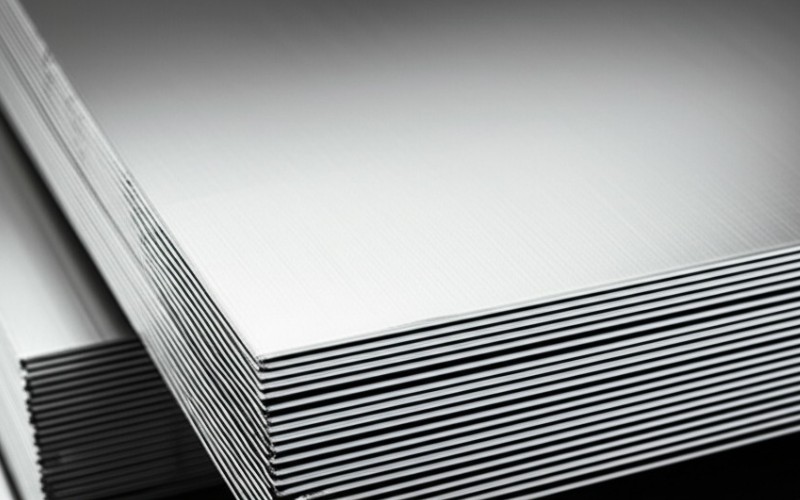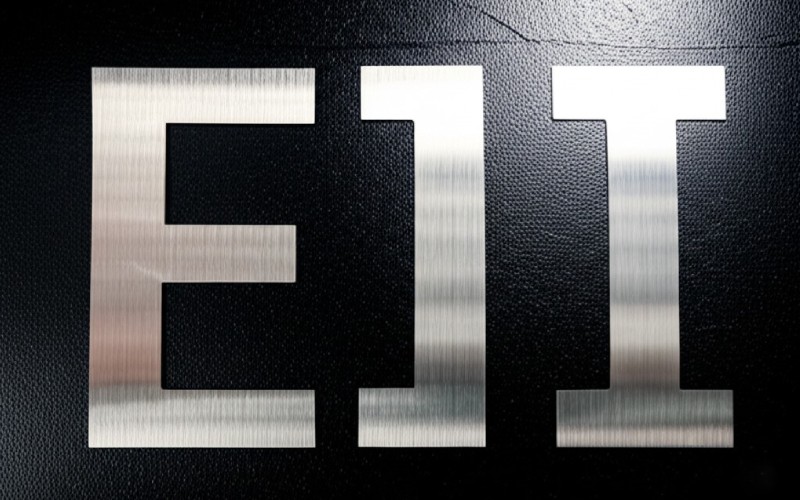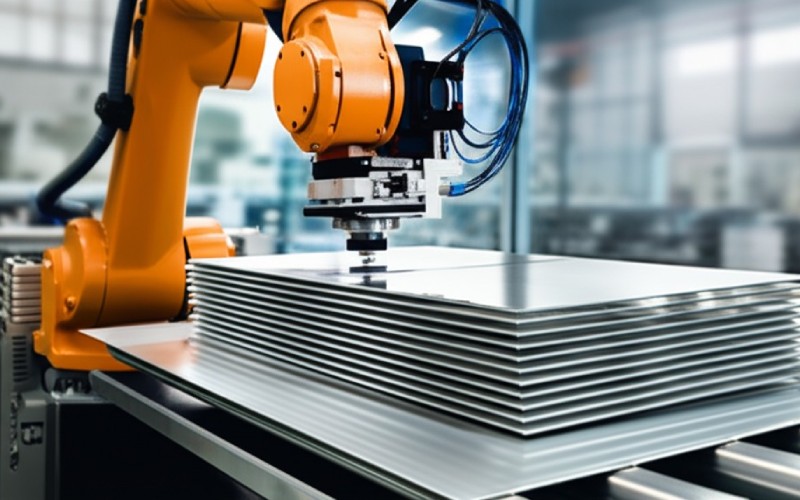Let Sino's Lamination Stacks Empower Your Project!
To speed up your project, you can label Lamination Stacks with details such as tolerance, material, surface finish, whether or not oxidized insulation is required, quantity, and more.

The core of the transformer is laminated to reduce a specific kind of energy waste. This article will walk you through exactly why this is done. You’ll learn how this simple idea makes everything from your phone charger to the power grid more efficient. This isn’t just for engineers; it’s for anyone curious about how things work.
You put electricity in one side and get a different voltage out the other, with no moving parts. The secret is the principle of electromagnetic induction. A transformer has two sets of wires, a primary winding and a secondary winding. They are wrapped around a central iron core. When an alternating current (ac) flows through the primary coil, it creates a changing magnetic field. This magnetic field is guided through the transformer core.
The job of the core is to be a superhighway for this magnetic energy, which we call magnetic flux. The flux travels from the primary coil to the secondary coil. As this moving magnetic flux passes through the secondary winding, it creates, or induces, a current in that coil. The iron core is the bridge that makes this all happen efficiently. We need a good magnetic material for this bridge. And the best material for transformer cores is a special kind of steel. The iron core is usually called a transformer core. A good transformer core ensures most of the magnetic flux from the primary winding reaches the secondary winding.
Now, here’s the problem. The transformer core is made of metal. Because steel itself is a magnetic material and a conductor, the changing magnetic flux doesn’t just create a current in the secondary coil. It also in the iron core creates little swirls of current. Imagine a river flowing smoothly. If you put a big rock in the middle, you get little whirlpools, or eddies, behind it. An eddy current is just like that, but with electricity inside the iron core.
These little electrical whirlpools are a big problem. They don’t do any useful work. They just spin around inside the core, generating heat. This heat is wasted energy. We call this waste eddy current loss. This loss is caused by two main things: the strength of the magnetic flux and how easily the core material conducts electricity. A strong magnetic field and a conductive core will create a large eddy current. This leads to a significant temperature rise in the transformer, which is inefficient and can even damage the device. This power loss is something we must fight.
So, how do we stop these energy-wasting whirlpools? This is where the brilliant idea of lamination comes in. Instead of a solid block of metal, we build the core from a stack of very thin metal sheets. Each sheet is coated with a thin layer of insulation, like a varnish or an oxide layer. Think of it like a deck of cards instead of a block of wood. The magnetic flux can still travel easily along the length of the sheets, from the primary to the secondary coil.
However, the insulating layers act as barriers. They make it very difficult for the eddy current whirlpools to form. An eddy current wants to flow in a wide circle, but the insulating layers chop that circle up into many tiny, ineffective paths. This clever trick reduces the eddy current dramatically. The thinner we make each lamination, the smaller the path for any potential eddy current, and the lower the eddy current loss. Making the iron core in that way is key to an efficient transformer. This is how we reduce the eddy currents.
You might be asking, “Wouldn’t it be cheaper and easier to just use one solid iron core?” On the surface, yes. But the energy waste would be huge. A solid iron core would allow a very large eddy current to flow through its entire cross-section. This would cause a huge eddy current loss, making the transformer get very hot and waste a lot of power. Using a solid core in that way will greatly increase the iron loss.
This wasted energy, or iron loss is caused by these currents. A solid core would be a disaster for efficiency. Most of the electrical energy going in would be converted to heat instead of being transferred to the secondary winding. The size of the iron core would have to be much larger to handle the heat, increasing cost and weight. The whole point of a transformer is to transfer power efficiently. A solid iron core does the exact opposite. By using lamination, we reduce eddy current flow without hurting the magnetic path.
The thin sheets we use for lamination aren’t just any steel. They are made from a special alloy called silicon steel. Sometimes it’s also called electrical steel. Silicon steel is a kind of alloy made by adding a small amount of silicon to low carbon steel. The addition of silicon is crucial. So, why is silicon steel the star player here? Because it has two amazing magnetic properties that make it perfect for a transformer core.
First, the material used needs high magnetic permeability. Second, it needs high electrical resistivity. Resistivity is a measure of how much a material resists the flow of electric current. Regular steel is a decent conductor. But when you make silicon steel, the silicon content increases the material’s resistivity. A higher resistivity means it’s harder for an eddy current to flow, which further reduces the eddy current loss. This is why steel is used in this form. The silicon steel is the perfect core material. It’s the best magnetic material for this job. We love silicon steel for its amazing abilities. A transformer made of silicon steel is much more efficient. Using silicon steel is the industry standard. This special silicon steel is a game-changer.
We’ve talked about how silicon steel helps reduce unwanted currents. But its main job is to be an excellent pathway for the magnetic flux. The magic property here is called high magnetic permeability. Permeability is a measure of how easily a magnetic field can be set up in a material. Think of it as a magnetic welcome mat. Silicon steel has a very high magnetic permeability. This means it eagerly accepts and guides the magnetic flux from the primary winding to the secondary winding with very few “leaks.”
This property ensures that almost all the magnetic energy created by the primary coil is delivered to the secondary coil. This results in a large magnetic induction intensity. This is what makes a transformer so efficient at transferring power. The high magnetic quality of silicon steel means we can build a smaller, lighter, and more powerful transformer. The high silicon content in silicon steel helps create these fantastic magnetic conditions. The high magnetic nature of silicon steel is exactly what we need. This strong magnetic property is essential. The magnetic field is managed perfectly by silicon steel. This magnetic permeability is a key performance metric. We need high magnetic performance. The magnetic field lines are concentrated inside the silicon steel.
When a transformer always works with an ac supply, some energy is always lost in its core. We call this total loss the core loss, or sometimes the iron loss. This loss in the iron core is a major source of inefficiency in power transformers. We want to make the low core loss a priority. This power loss in the iron is wasted as heat.
The core loss is caused by two reasons. The first is the eddy current loss we’ve already talked about. The second is called hysteresis loss. Together, they are known as hysteresis and eddy current losses. Reducing both is the key to improving transformer performance. The development of better core material, like advanced silicon steel, is all about creating a magnetic material with the lowest possible core loss. Every watt of energy saved here is a watt that can be used to power our homes and devices.
This one sounds complicated, but the idea is simple. A magnetic material like silicon steel is made up of tiny little regions called magnetic domains. You can think of them as tiny magnets. When there is no magnetic field, they are all pointing in random directions. When the energized coil creates a magnetic field, these domains line up. This process is called magnetization.
Because the transformer runs on ac, the current is constantly switching back and forth, 50 or 60 times a second. This means the magnetic field is also rapidly reversing. Every time it reverses, all those tiny magnetic domains have to flip around to line up with the new direction. It takes a little bit of energy to make them flip. This energy is lost as heat. This loss is called hysteresis loss. Silicon steel is special because it has low coercivity, which means its magnetic domains can flip back and forth very easily, without much energy. This hysteresis effect is minimized. Once magnetized, they have to be demagnetized and re-magnetized in the opposite direction, and this cycle causes hysteresis loss.

The process of making the core is quite advanced. The silicon steel starts as a large roll of metal. There are two main types: hot-rolled silicon steel and cold-rolled silicon steel. Cold-rolled silicon steel sheets are mainly used today because they have even better magnetic properties. This hot-rolled silicon steel is processed further. The steel is then treated to create the ideal crystal structure. This often involves a process called anneal, where the metal is heated and slowly cooled. To anneal the steel makes it better.
Then, the silicon steel sheet is coated with a very thin insulating layer. This is crucial for stopping eddy currents. Finally, the coated silicon steel sheet is cut into long pieces, usually in the shape of an “E” and an “I.” These pieces are then stacked together, one by one, to form the iron core of the transformer. The silicon steel sheet must be handled carefully. The way we stack this silicon steel sheet matters. The narrower the spliced pieces, the better the effect. The final silicon steel sheet might be only 0.35mm thick. We use a silicon steel sheet for this reason. This specific kind of silicon steel is generally used. This silicon steel is perfect for being a silicon steel sheet. The hot-rolled silicon material is less common now.

So, what do we get from all this work? We get a highly efficient transformer. By using a laminated core made of silicon steel, we attack both major sources of energy losses. The lamination stops the eddy current, and the special properties of silicon steel reduce the hysteresis loss. This leads to lower overall core loss. This design also has a low thermal expansion coefficient, which means it doesn’t expand and contract too much as its temperature changes.
All of the above-mentioned favorable factors combine to make modern transformers incredibly efficient, often over 98% or 99%. This means less wasted electricity, lower operating temperatures, and smaller, more powerful devices. The size of the transformer can be reduced. From the giant transformers in power substations to the tiny ones in your gadgets, the use of a laminated silicon steel core is a fundamental principle that makes our electrical world possible. It leads to a decrease in wasted energy and an increase in performance. We reduce the effective losses. The development of new materials continues, but the core principles remain the same. The use of silicon steel is widespread in the electric industry.